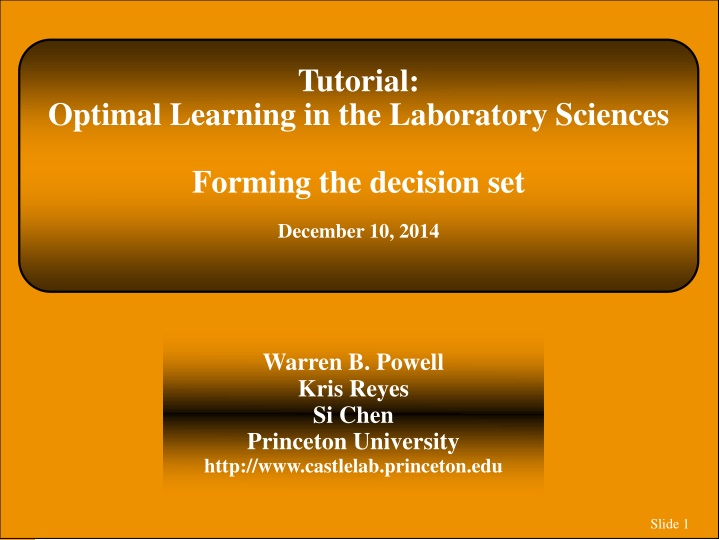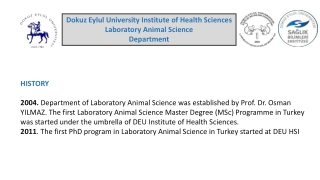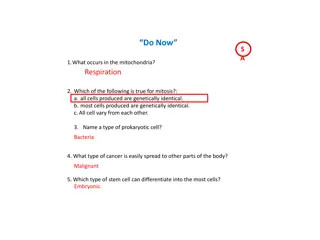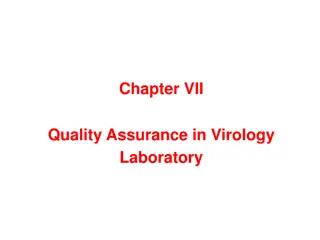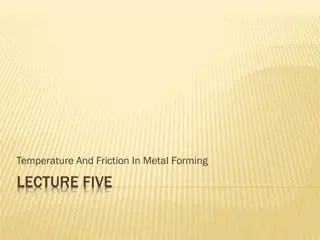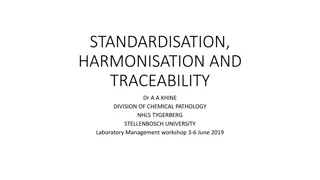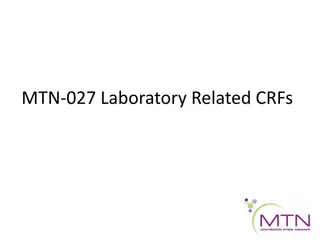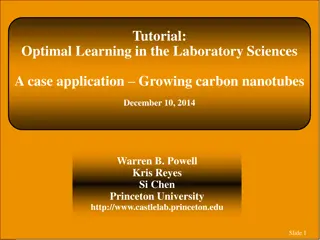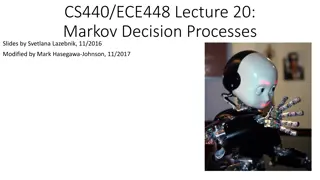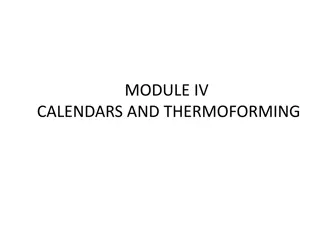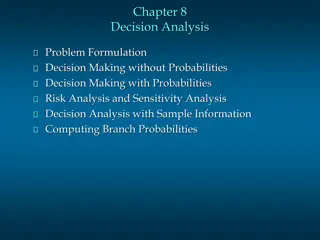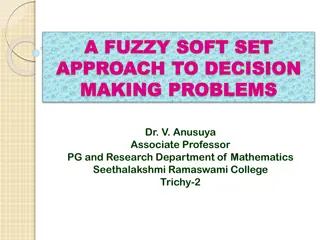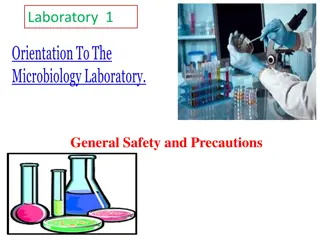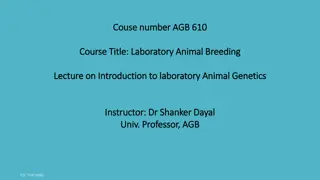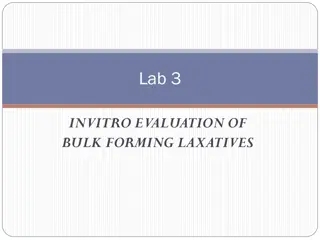Optimal Learning in Laboratory Sciences: Forming the Decision Set
In this tutorial from December 10, 2014, by Warren B. Powell, Kris Reyes, and Si Chen of Princeton University, the focus is on forming the decision set in laboratory sciences. The presentation discusses discrete and continuous decisions, nanotube length, complex decision-making scenarios, and the importance of considering all options despite budget constraints. Explore the thought processes behind decision-making and the need to think beyond conventional choices.
Download Presentation

Please find below an Image/Link to download the presentation.
The content on the website is provided AS IS for your information and personal use only. It may not be sold, licensed, or shared on other websites without obtaining consent from the author.If you encounter any issues during the download, it is possible that the publisher has removed the file from their server.
You are allowed to download the files provided on this website for personal or commercial use, subject to the condition that they are used lawfully. All files are the property of their respective owners.
The content on the website is provided AS IS for your information and personal use only. It may not be sold, licensed, or shared on other websites without obtaining consent from the author.
E N D
Presentation Transcript
Tutorial: Optimal Learning in the Laboratory Sciences Forming the decision set December 10, 2014 Warren B. Powell Kris Reyes Si Chen Princeton University http://www.castlelab.princeton.edu Slide 1 Slide 1
Lecture Outline Forming the decision set 2
Decision Set Discrete Decisions E.g. different catalysts: Fe, Ni, PHN, Al2O3+Fe, Al2O3+Ni Continuous Decisions E.g. temperature, pressure, flow rate Nanotube Length Puretzky et al. Appl. Phys. A 81 (2005) 3
Decision Set Decisions may be complex 1,000 metal organic frameworks 87,000 combinations of substituents placed at different sites 10,000 combinations of four different parameters Temperature Concentration Ratio Density With so many choices and such small budgets, why consider all these combinations?
Decision Set Decisions may be complex 1,000 metal organic frameworks 87,000 combinations of substituents placed at different sites 10,000 combinations of four different parameters Temperature Concentration Ratio Density With so many choices and such small budgets, why consider all these combinations?
Decision Set Considering all decisions It is still important to explicitly consider all the possible options, even when the experimental budget is small. We can generalize what we learn from one experiment
Are we thinking inside the box? Are there only 5 possible catalysts (Fe, Ni, PHN, Al2O3+Fe, Al2O3+Ni)? How about Co? Are there only 3 continuous parameters? How about humidity? Should we only consider one small temperature range, e.g. 800-1000 Celsius? How about 600-1500 Celsius? Other choices or system? How about changing substrates? 7
